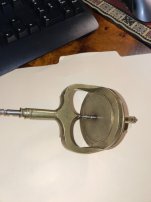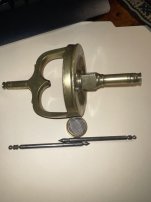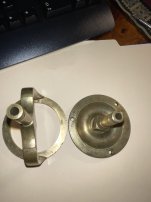I am just starting down the path of machining to assist in watch restoration. I have a question on approach to restore an antique watch tool.
The shafts are loose in the brass holders and should align point to point. See photos. The steel shafts fit in the device and should smoothly and evenly touch points (they do not as the brass has worn over the years. I am thinking about drilling the brass to consistent size all the way through then brass sleeves to fit the steel shafts (the shafts are very consistent in diameter). Another thought was to drill the brass to consistent size and make new steel point shafts. Any other thoughts or suggestions?
Thanks in advance and apologies as I am new to the forum and may be in the wrong place.
Thanks,
Bob




The shafts are loose in the brass holders and should align point to point. See photos. The steel shafts fit in the device and should smoothly and evenly touch points (they do not as the brass has worn over the years. I am thinking about drilling the brass to consistent size all the way through then brass sleeves to fit the steel shafts (the shafts are very consistent in diameter). Another thought was to drill the brass to consistent size and make new steel point shafts. Any other thoughts or suggestions?
Thanks in advance and apologies as I am new to the forum and may be in the wrong place.
Thanks,
Bob






